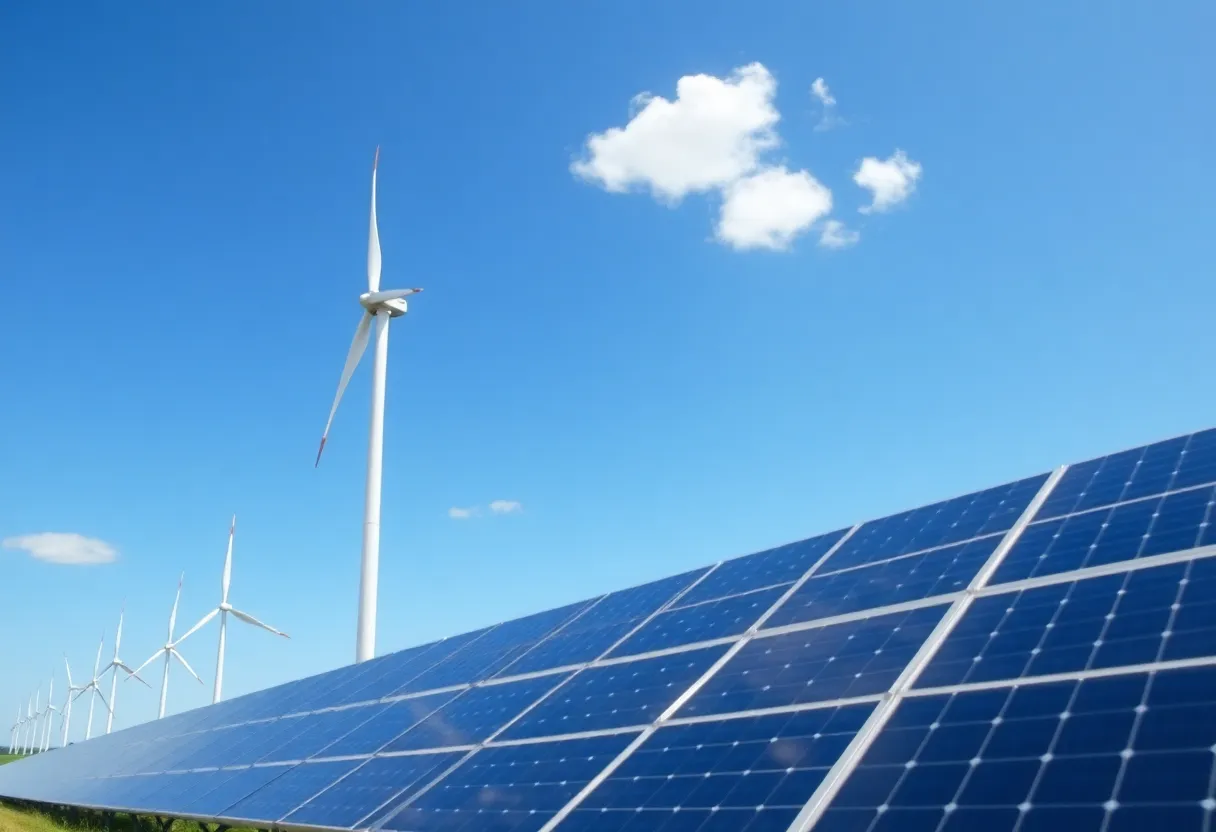News Summary
The IRS has unveiled Notice 2025-42, which revises the beginning of construction requirements for wind and solar facilities. The guidance clarifies tax credit eligibility, emphasizing the Physical Work Test and limiting the five percent safe harbor for larger projects. This regulation aims to bolster domestic energy initiatives and establish clearer criteria for tax credits under the Internal Revenue Code, responding to the directives of Executive Order 14315. Developers now face stricter guidelines as they navigate compliance for critical renewable energy tax incentives.
City, Date: On August 15, 2025, the Internal Revenue Service (IRS) unveiled Notice 2025-42, a significant regulation affecting the “beginning of construction” requirements for wind and solar facilities, outlined under Sections 45Y and 48E of the Internal Revenue Code. This new guidance aims to clarify eligibility for tax credits associated with clean energy projects and is part of a broader effort to discourage reliance on foreign-controlled energy sources, in response to Executive Order 14315, issued on July 7, 2025.
The notice is applicable to projects that do not begin construction under earlier IRS guidelines before September 2, 2025. A crucial takeaway from the new regulation is the emphasis on the Physical Work Test, which will continue to be a vital criterion for approving tax credit eligibility. However, the IRS has limited the application of the previous five percent safe harbor provision specifically for small solar projects with a nameplate capacity of 1.5 MW or less. For larger solar and wind projects, this safe harbor will no longer be applicable; these facilities are now required to meet the Physical Work Test to qualify for credits.
Developers planning to take advantage of the five percent safe harbor for larger projects must have already started construction based on prior IRS guidance before the indicated September deadline. The Physical Work Test allows for significant physical work to be executed either on-site or off-site, with an array of designated activities for both wind and solar energy initiatives.
Key Provisions of the IRS Notice
While the continuity requirement remains unchanged—a project must be placed in service by the end of the calendar year that falls four years after construction begins—the IRS’s latest guidelines clarify specific forms of substantial physical work necessary for eligibility. For instance, wind facilities can demonstrate this through activities such as excavation for turbine foundations and the pouring of concrete pads. Solar facilities may include the assembly of supporting structures for solar panels as acceptable work activities.
Future Guidance
Importantly, the notice has not yet addressed the beginning of construction standards in relation to the Foreign Entities of Concern (FEOC) framework, which hints at additional IRS guidance to follow. Under the provisions of the One Big Beautiful Bill Act (OBBBA), it remains crucial for wind and solar facilities to commence construction prior to July 5, 2026, or to become operational by December 31, 2027, to be eligible for the associated tax credits.
This move by the IRS exemplifies an effort to provide more stringent regulations and clear definitions concerning the eligibility for the Section 45Y clean electricity production credit and Section 48E clean electricity investment credit. This is not the first update on construction criteria; the IRS has previously issued guidance through Notice 2013-29 and Notice 2018-59, establishing foundation for current regulations.
In summary, the IRS’s Notice 2025-42 modifies the existing framework surrounding the beginning of construction requirements for renewable energy projects. The focus on limiting the five percent safe harbor provision for larger projects to bolster the Physical Work Test reflects an intensified scrutiny on subsidies that support domestic energy initiatives. As the IRS prepares to issue further clarifications, stakeholders within the renewable energy sector will need to stay vigilant and adapt to these evolving requirements to ensure compliance and eligibility for critical tax credits.
Deeper Dive: News & Info About This Topic
HERE Resources
New Tax Regulations Impact Wind and Solar Energy Projects
Additional Resources
- OurQuadCities: IRS to Keep Wind, Solar Companies from Tax Breaks
- RTO Insider: IRS Guidance on Wind and Solar Credits
- New York Times: IRS Wind, Solar Tax Credits
- PwC: IRS Sheds Light on Construction Rules for Wind and Solar Credits
- Wikipedia: Renewable Energy in the United States
Author: STAFF HERE CLEVELAND WRITER
The CLEVELAND STAFF WRITER represents the seasoned team at HERECleveland.com, your premier source for actionable local news and information in Cleveland, Cuyahoga County, and beyond, delivering "news you can use" with in-depth coverage of product reviews for personal and business needs, local business directories, politics, real estate trends, neighborhood insights, and state news impacting the region—backed by years of expert reporting and robust community input, including local press releases and business updates, while providing top reporting on high-profile events like the Rock and Roll Hall of Fame inductions, Cleveland International Film Festival, and holiday parades, alongside key organizations such as the Cleveland Clinic, Cleveland Orchestra, and Great Lakes Science Center, plus leading businesses in manufacturing and healthcare like Sherwin-Williams and University Hospitals, and as part of the broader HERE network including HEREDayton.com, offering comprehensive, credible insights into Ohio's vibrant landscape. HERE Cleveland HERE Dayton





